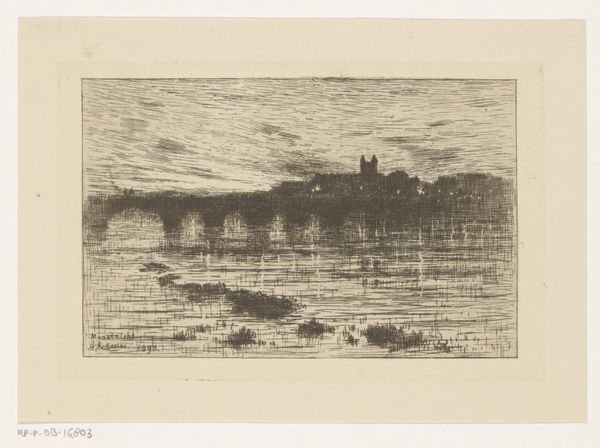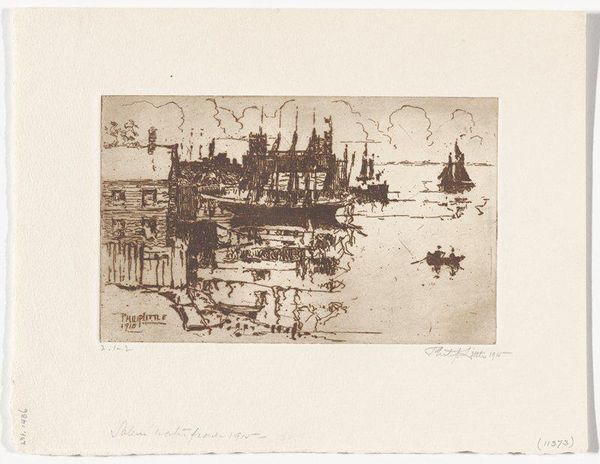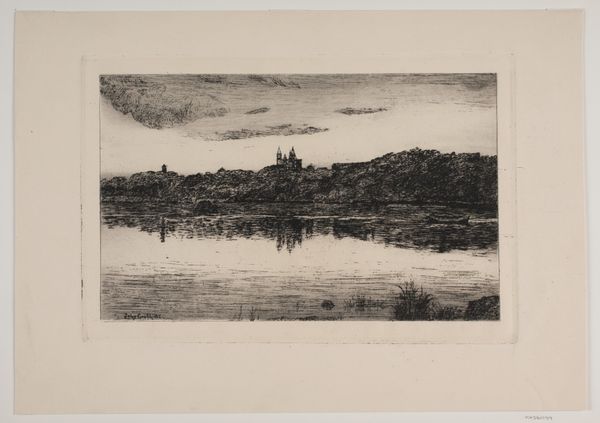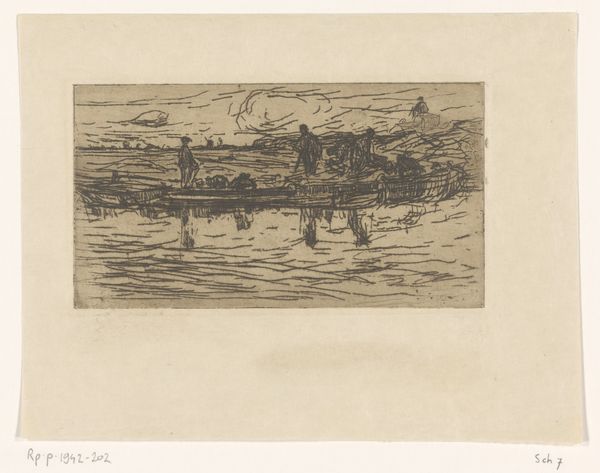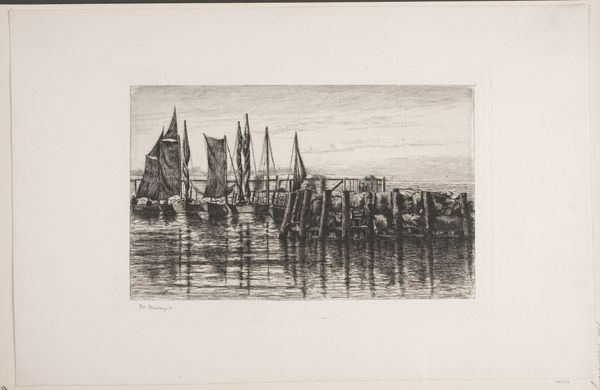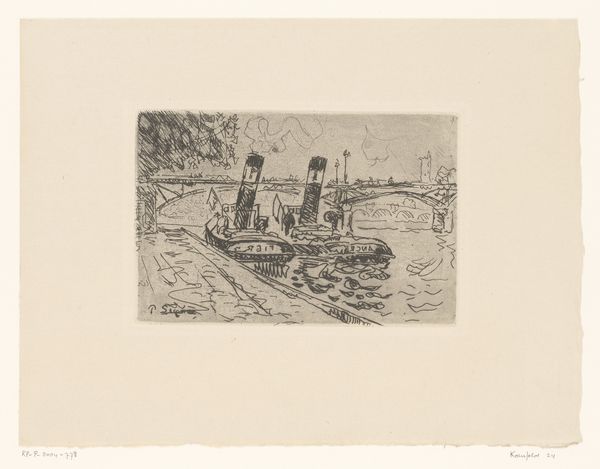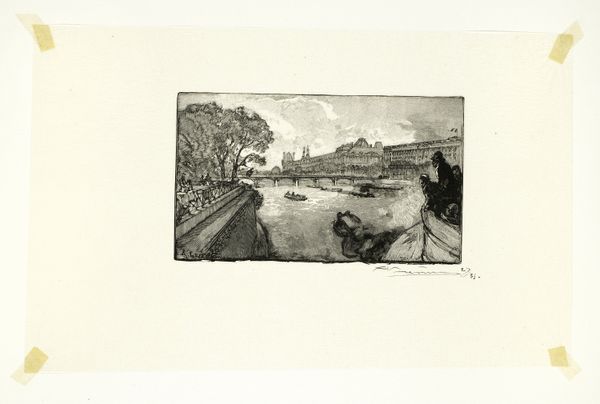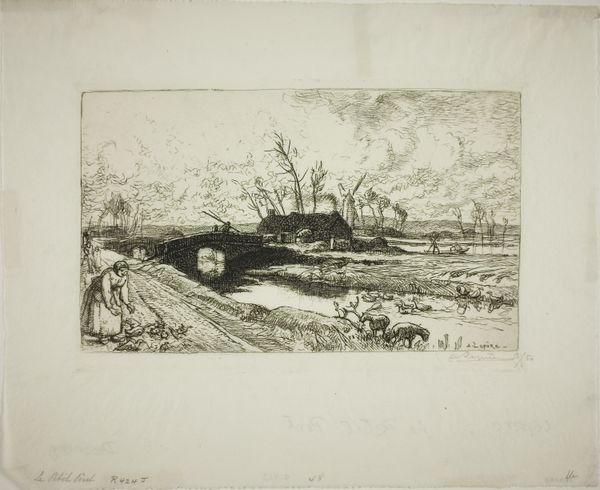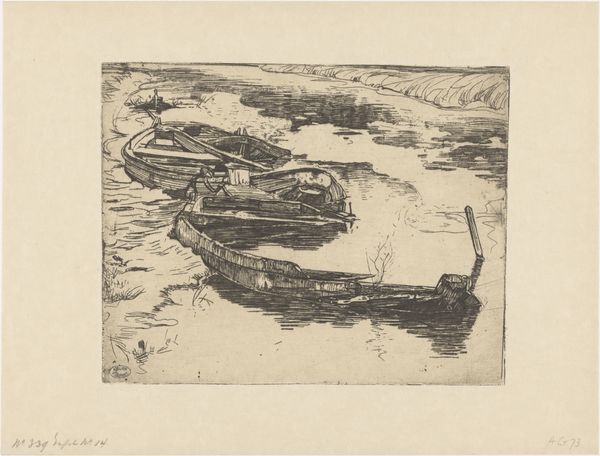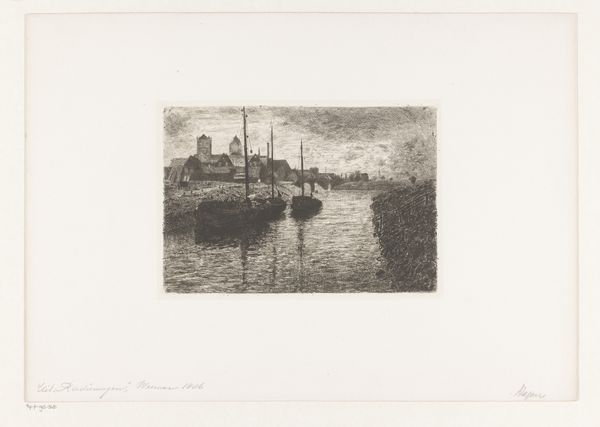
Dimensions: 146 × 224 mm (image); 180 × 290 mm (stone); 273 × 380 mm (sheet)
Copyright: Public Domain
Curator: Pissarro's lithograph, "The Houses of Parliament, London," created around 1897. Look at it—all in moody grays. Editor: There’s a strange, hushed quality to it. Almost melancholic. I notice the smokestacks and think, immediately, of labor and the human cost of progress in this scene of a modern, bustling London. Curator: He loved cityscapes, didn’t he? Particularly those that captured the atmosphere and energy of London. He wanted to portray what he saw, en plein air. What would he think of me staring at it here, a century on, rather removed from the breeze and smog? Editor: That's precisely the point. The Houses of Parliament, here, are not merely architectural marvels; they're the nexus of power, deeply entangled in the colonial project. Who does that progress actually serve? It’s also hard not to consider the ecological cost. The fog isn’t just an atmospheric effect. It’s industrial pollution, and the price of the smokestacks Pissarro has drawn with what I think is a nervous intensity. Curator: Yes! And those brushstrokes trying to mimic the river’s surface, catching the light—he was after the feeling of the scene, the transient moments... But there's a deeper irony, isn't there? Editor: Absolutely. He, a committed anarchist in the 1880s who turned to the Impressionist mode... Curator: I can almost feel his uncertainty through the marks. Editor: Pissarro, then, becomes a complicated figure. He paints the seat of power, yet remains skeptical, retaining a commitment to the working class despite adopting a seemingly apolitical painting practice. The fuzziness of the lithograph almost communicates his hesitancy, the ethical dilemma inherent in depicting power. Curator: That makes me want to study it more carefully. Editor: It’s more than just a landscape; it’s a sociopolitical portrait etched in gray. We are left wondering about Pissarro, his politics, and our own relationship to that history, as well. Curator: A single piece of art really does turn into so much more once you dig deeper. Thank you. Editor: And thank you. Let’s look at it again!
Comments
No comments
Be the first to comment and join the conversation on the ultimate creative platform.

